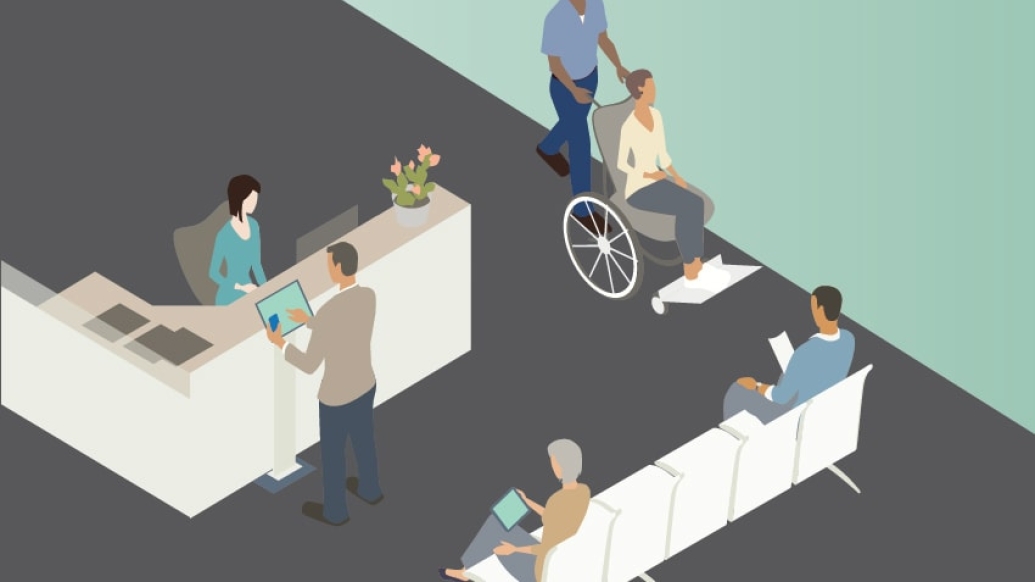Incentive payments to high-performing hospitals don’t result in improved patient care, a four-year University of Michigan study has found.
7:00 AM
Author |

A program designed to reward hospitals when they deliver high-quality care has failed to show a noticeable impact on clinical process and patient-experience measures as well as mortality outcomes after hospitalization, according to a University of Michigan study.
MORE FROM THE LAB: Subscribe to our weekly newsletter
That's seemingly the opposite intent of the Hospital Value-Based Purchasing program (HVBP), which offers payments to acute care hospitals that meet certain benchmarks when treating Medicare patients. Established in 2013, it is a part of the Patient Protection and Affordable Care Act administered by the Centers for Medicaid and Medicare Services.
The four-year U-M study, published in the New England Journal of Medicine, sought to determine whether HVBP improved delivery of care compared with control hospitals that were not part of the incentive program.
The conclusion?
"Hospital value-based purchasing offered little patient benefit over four years," says Andrew Ryan, Ph.D., an associate professor at the U-M School of Public Health. "Other than an improvement in mortality for pneumonia, there were no significant differences in the quality of care or reductions in deaths at the hospitals that participate in the program compared with those that do not."
To reach that conclusion, Ryan and colleagues at the U-M Medical School examined HVBP program data that measured seven clinical processes and eight patient-experience indicators used to determine which hospitals received incentives. These include protocols for handling patients from the moment they enter hospital doors to discharge and beyond.
The team also studied death rates 30 days after discharge following treatment for heart attack, heart failure and pneumonia.
A total of 2,842 hospitals were in the clinical-process analysis and 3,247 in the patient-experience analysis. The review also encompassed hospitals treating heart attack (2,195), heart failure (3,256) and pneumonia (3,525), respectively
The measures were too complex and the incentives were likely too small. For a policy to have a positive impact, the measures need to be simple and understandable to clinicians.Justin Dimick, M.D.
Lackluster results
The HVBP program has been evaluated by U-M researchers at various times throughout the four-year span and has not shown an impact at any point.
"Four years should be long enough to see the impact of a change," says senior author Justin Dimick, M.D., the George D. Zuidema Professor of Surgery at the U-M Medical School and a professor of health management and policy at the School of Public Health.
SEE ALSO: Does a Hospital's 'Safety Culture' Reduce Risky Infections?
"Prior studies conducted within a year or two of a policy being implemented might be considered too early, but if a policy is having its intended effects, there should be some measurable change by four years," says Dimick.
The HVBP program is funded by a reduction in the base rate of Medicare reimbursements to hospitals of 2 percent in what are called diagnostic related groups — predetermined amounts paid to hospitals for common diagnoses based on the average cost of care for that treatment or procedure. The savings is used to pay those hospitals that meet quality standards.
When the program began, the maximum payout hospitals could earn was 1 percent; today, they can receive up to 2 percent. This, in essence, gives high-performing facilities the opportunity to earn back what was taken away (and penalizes hospitals that underperform).
To make the program work, Dimick says, the government would need to simplify the quality metrics and boost the financial incentives.
"The measures were too complex and the incentives were likely too small. For a policy to have a positive impact, the measures need to be simple and understandable to clinicians," he says.
"Clinician leaders must be able to interpret where they are falling short so they can make changes. For a policy to work, the incentives must also be large enough to capture the attention of hospital leaders so they can deploy resources to do the improvement work."
Room for change
Despite the shortcomings of HVBP, Ryan says critics of health reform measures instituted in recent years should not be quick to call the value-based concept unsuccessful. Rather than scrap the idea, he suggests revamping it.
Ryan points to recent findings about the Hospital Readmission Reduction Program, a federal program that reduces payments to hospitals with excessive readmissions of patients they had discharged in the last month.
That effort kept 2,400 people (out of nearly 275,000) from heading back to the hospital, resulting in a $32 million savings in 2015.
Meanwhile, uncertainties — and optimism — remain.
"There's not a clear blueprint for how value-based programs should be designed to improve care," Ryan says. "The fact that we're seeing success from other programs speaks to the importance of continuing to try."
Other U-M authors were Sam Krinsky and Kristin Maurer. Ryan and Dimick are members of the U-M Institute for Healthcare Policy and Innovation. Grants from the National Institute on Aging supported the research.

Explore a variety of healthcare news & stories by visiting the Health Lab home page for more articles.

Department of Communication at Michigan Medicine
Want top health & research news weekly? Sign up for Health Lab’s newsletters today!





